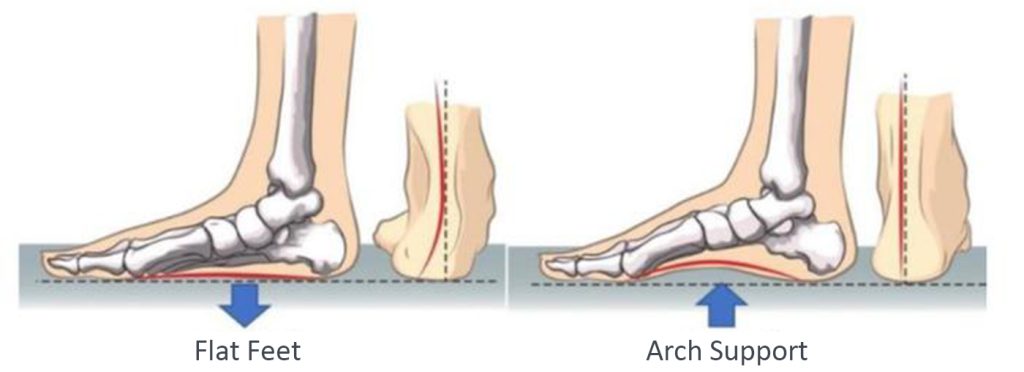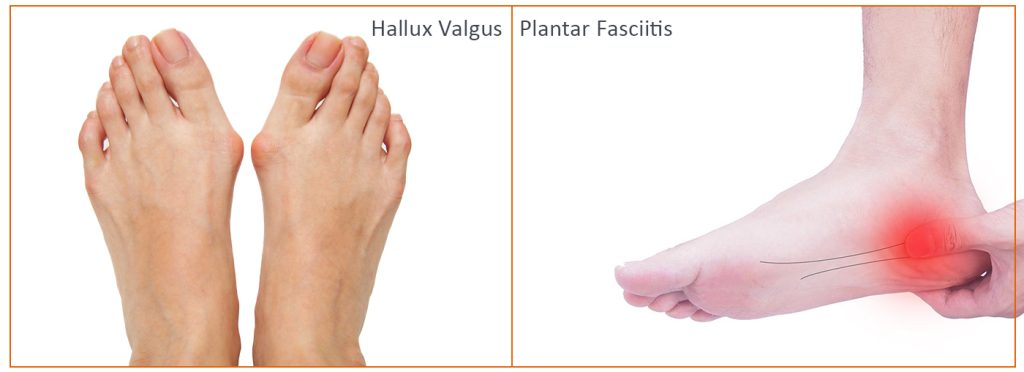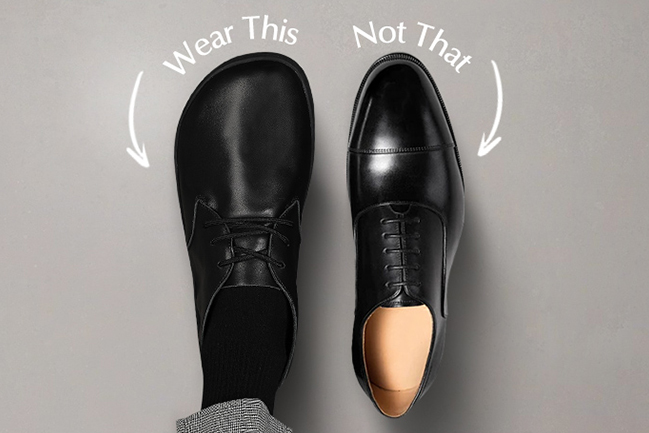Understanding Flat Feet
Our arch of the foot has an important component – Talus.
If the talus is not in the correct position, but moves inward and downward, then the arch of the foot will collapse, and this is the essence of “flat feet“.

Flat feet is a type of foot deformity, with an incidence rate accounting for approximately 7.1% of the population. Some people are born with it, while others develop it later in life (such as due to factors like obesity and foot injuries).
Although most patients with flat feet hardly have any symptoms on a daily basis, those who do are not so lucky. Their conditions usually tend to become more severe with activity.
1.People with flat feet tend to walk with a slightly pigeon-toed gait, with their toes pointing outwards. Their heels are prone to getting injured, and the outer sides of the shoe heels and the inner sides of the soles are apt to get worn out.

2.Due to the collapse of the arch of the foot (the disappearance of the arch), the cushioning effect on the body during exercise is reduced, making it easier to get injured.

3.Flat feet are unable to effectively stabilize the feet. If a person walks for a long time or engages in excessive activities, it is likely to cause overuse and inflammation of the soft tissues in the feet, resulting in hallux valgus (deformed big toe), pain in the sole of the foot, plantar fasciitis and so on.

4.People with flat feet lack the support of the arch of the foot, which changes the body’s biomechanics. This further affects the knee joints, pelvis, spine, lower back, etc., and thus causes pain in the buttocks, knees, and lower back.
Two Simple Self-Inspection Methods
If you’re not sure whether you have flat feet or not, the following two tests can help you conduct a simple self – examination.
1.Wet – footprint Test
Evenly apply paint to the sole of the foot. When the paint on the sole is slightly dry, make a complete footprint on the prepared paper. The wider the impression between the heel and the sole of the foot, the more serious the collapse of the arch.

2.Shoe Inspection Test
Observe the wear condition of the soles of your shoes. If you have flat feet, there will be more wear on the inner side of the soles, especially in the heel area.

Both of the above are relatively simple self – inspection methods. If there are signs of flat feet, it is recommended that everyone seek a professional physical therapist for an accurate assessment and treatment.
How to Self – Remedy for Flat Feet
If you happen to be one of the victims of flat feet, are you eager to know what methods can be used for remedy after reading this? Here comes the useful information!
First of all, we need to determine whether you have a structural flat foot or a functional flat foot.
Structural flat foot → The arch of the foot is low when standing on the ground, and it’s also low when sitting down or in a non – weight – bearing state.
Functional flat foot → The arch of the foot is elevated in a non – weight – bearing state.
If it’s a structural flat foot, unfortunately, the possibility of correction is relatively small. However, most people have functional flat feet. We can relieve the symptoms by routinely practicing the following movements!
1.The short-foot exercise
Raise the arch of the foot while keeping the toes flat, and then press the big toe firmly on the ground. Hold this position for 15 seconds each time, do it 8 times for each set, and repeat for 3 sets. To put it simply, it’s like making your foot shorter. Imagine what it would feel like to squeeze your foot into a shoe that is one size smaller.
2.Place some cylindrical objects under your feet and roll them back and forth with your feet to achieve the effect of relaxing the outer and inner arches of the feet. Place one foot on top of the other and do resistance exercises against each other.


4.Soak both feet in hot water for 10 to 15 minutes before going to bed every day, and then give them a massage to relax the soles of the feet and relieve fatigue.
5.Wear customized orthopedic shoes or orthopedic insoles. The orthopedic insoles can improve the distribution of plantar pressure, maintain the normal shape of the arch of the foot, and reduce foot pain.
Important reminder: Before customizing insoles, it is necessary to conduct static plantar pressure detection and gait analysis first!
6.Professional correction by a physical therapist: A physical therapist will design a targeted corrective training program for you based on your assessment situation and personal needs, and the rehabilitation effect will also be better.
TIPS:Studies have found that elderly people with flat feet are 1.3 times more likely to suffer from knee pain than ordinary people. For many adults, the pain symptoms caused by flat feet will become more and more severe as they get older.
Friendly Notices: If people with flat feet experience discomfort symptoms, it is advisable to seek treatment as early as possible. It is recommended to go to hospitals or specialized rehabilitation institutions as soon as possible and ask professional rehabilitation physicians to assess your condition and provide rehabilitation plans for you.
Finally, please take good care of yourself~



